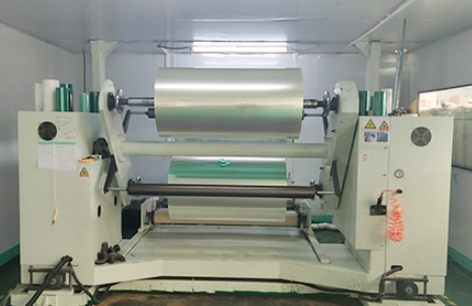May. 13, 2024
In the world of precision engineering and manufacturing, protective films have emerged as a game-changing technology, providing crucial support to the intricate process of laser cutting. Let's delve into the depths of this powerful technology and understand its significance in enhancing the efficiency and accuracy of laser cutting operations.
Protective films, also known as surface protection films or masking films, are thin, adhesive-backed films designed to safeguard surfaces from scratches, abrasions, and other forms of damage during handling, transportation, and processing. These films serve as a protective barrier, shielding delicate surfaces from external elements without leaving behind any residue or adhesive residue.

One of the primary functions of protective films in laser cutting is to provide enhanced surface protection to the materials being processed. As laser cutting involves high-intensity beams of light that can potentially damage the surface of the material, applying a protective film helps mitigate the risk of scratches, scuffs, and other surface imperfections.
In addition to physical protection, protective films also help prevent oxidation and contamination of the material surface during laser cutting. By creating a barrier between the material and the surrounding environment, these films minimize the risk of rust formation, corrosion, and chemical reactions, ensuring the integrity of the material remains intact.
Another critical aspect of protective films in laser cutting is their role in facilitating precision cutting. By masking specific areas of the material surface, these films enable precise positioning of the laser beam, allowing for intricate and detailed cuts with minimal margin for error. This level of precision is essential, particularly in industries where accuracy is paramount, such as aerospace, automotive, and electronics.
By safeguarding the material surface from damage and contamination, protective films help reduce clean-up time and costs associated with post-processing. With the film acting as a barrier, residues such as slag, debris, and cutting fluids are less likely to adhere to the material surface, streamlining the cleaning process and minimizing downtime between cutting operations.
In the metal fabrication industry, protective films find extensive use in laser cutting of metals and alloys such as stainless steel, aluminum, and titanium. These films help preserve the surface finish and integrity of the metal during cutting, ensuring high-quality results without the risk of surface damage or contamination.
In the plastics and polymer processing sector, protective films play a crucial role in laser cutting of materials such as acrylics, polycarbonates, and PVC. By protecting the material surface from heat-related damage and discoloration, these films ensure clean, precise cuts with minimal distortion, enhancing the overall quality of the finished product.
In industries dealing with glass and ceramic materials, protective films provide essential surface protection during laser cutting and engraving processes. These films help prevent chipping, scratching, and surface defects, allowing for precise and intricate designs to be etched onto the material surface without compromising its integrity.
In conclusion, protective films represent a powerful technology that significantly enhances the efficiency and precision of laser cutting operations. By providing enhanced surface protection, preventing oxidation and contamination, facilitating precision cutting, and reducing clean-up time and costs, these films play a crucial role in various industries reliant on laser cutting technology. Contact us today to learn more about how protective films can optimize your laser cutting processes. Trust us as your reliable supplier of high-quality protective film solutions.
Navigation
+86 189 2316 1875
+86 757 8383 6678
+86 757 8383 8678
No. 10 Industry Huacongsiyue Village, Shishan Town, Nanhai District, Foshan, Guangdong Province, China